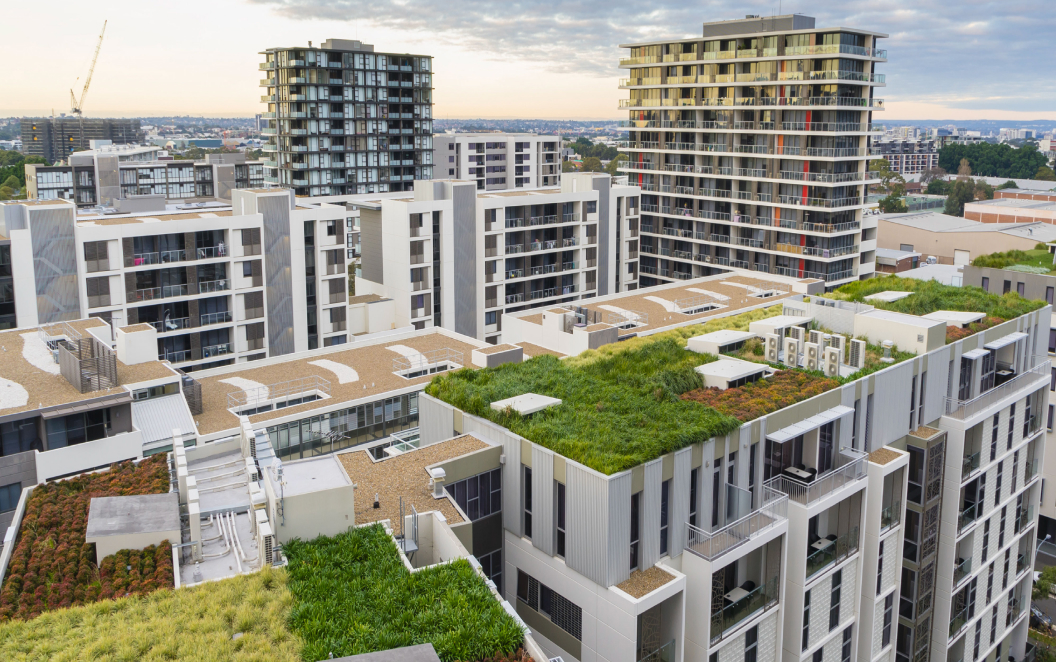
Construyendo el presente con Eficiencia Energética
La eficiencia energética de los edificios, que no era significativa en el pasado, sin embargo se ha convertido en el presente en la medida dominante de la calidad de las edificaciones. El consumo de energía está aumentando rápidamente debido al crecimiento de la población y la urbanización de las ciudades. Según estadísticas, a nivel mundial, los edificios consumen más del 40% de energía.
Dependiendo de las condiciones climáticas, el tipo y el uso de las edificaciones, y el nivel de desarrollo de las naciones, los requisitos de energía edilicia varían de una nación a otra. Por eso es tan importante que las construcciones en la actualidad consideren en el proceso de diseño y construcción, medidas, técnicas y estrategias para reducir el consumo excesivo de energía y por ende, reducir el impacto de las emisiones de gases de efecto invernadero que afectan al medioambiente.
¿Qué es la eficiencia energética?
La eficiencia energética es la optimización en el consumo de la energía. Es considerado energéticamente eficiente aquello que consume una cantidad inferior a la media de energía para realizar una actividad.
La eficiencia energética es la optimización en el consumo de la energía. Es considerado energéticamente eficiente aquello que consume una cantidad inferior a la media de energía para realizar una actividad.
Diseñar un edificio energéticamente eficiente es posible con un estudio multidisciplinario que comienza desde el surgimiento de la idea de construir un edificio sostenible. El ahorro de la energía debe considerarse durante todo el ciclo de vida útil del edificio que va desde la energía usada durante la etapa de producción, utilizando materiales de construcción sostenibles, la energía para el mantenimiento del edificio, hasta su rehabilitación y/o proceso de demolición de la edificación. Todo ello con el fin de contribuir con la sostenibilidad medioambiental.


Ahorro energético durante el ciclo de vida útil de una edificación
Los edificios tienen un enorme potencial de eficiencia energética. Para obtener este gran potencial es necesario tener algunas regulaciones e iniciativas para mejorar la eficiencia energética y usarla de forma racional en los edificios. Por tal motivo, el ahorro de la energía es un punto clave en las edificaciones sostenibles, que se ve reflejado en la reducción de costo de servicios públicos, mediante la implementación de los siguientes métodos y medidas:
Fase de diseño del proyecto
-Diseño de arquitectura bioclimática: considera las condiciones climáticas y aprovecha los recursos disponibles para reducir el impacto medioambiental. Toma en cuenta la forma y/o geometría del edificio, la orientación de la edificación, el uso de control solar externo a través de protecciones solares, puesto que la cantidad de horas de luz solar determinará el consumo energético de la edificación, y el uso de sistemas de diseño pasivo logrará un alto rendimiento controlado de la ventilación natural y recuperación del calor.
-Diseño de envolventes de alto rendimiento en el edificio según la ubicación geográfica: permiten el aislamiento térmico completo en los muros perimétricos o fachada del edificio y en los techos, el uso de acristalamiento de alto rendimiento y de baja emisividad, carpintería adecuada, sellados al aire que contribuyen a alcanzar la temperatura óptima regulada en el interior y con ello producen una menor demanda de calefacción y aire acondicionado.
- Instalación de sistemas de energías renovables: desde la utilización de sistemas de energía solar fotovoltaica para la generación de electricidad hasta sistemas eólicos o geotérmicos que permiten mejorar la eficiencia de los sistemas de climatización.
- Inclusión de medidores y sensores inteligentes de los patrones de consumo energético para el seguimiento y control del consumo eléctrico en tiempo real mediante sistema de automatización en áreas comunes de edificios (estacionamientos, escaleras de emergencia).
Fase de construcción de la obra
-Uso de eco materiales en la construcción, como los materiales locales, con uso eficiente de los recursos y que requieren menor gasto de energía por el transporte.
-Revisión del personal de mantenimiento de obra con respecto al encendido y apagado de los equipos de grupos electrógenos para la energía provisional, asimismo con el control de consumo de las luminarias provisionales.
-Calidad de sistemas de instalaciones eficientes energéticamente, que hayan sido proyectados, diseñados y calculados para obtener su máximo rendimiento.
-Valoración energética en la gestión de residuos sólidos en la construcción para una optimización de los recursos necesarios en función de la sostenibilidad y dar prioridad a la reducción, reutilización y reciclaje de residuos.
Fase operativa del edificio
-Uso de sistemas de iluminación LED en lugar de usar lámparas incandescentes y halógenos que consumen hasta cuatro veces más cuando se implementa la edificación.
-Uso responsable de la iluminación artificial, aprovechando al máximo la luz natural.
-Utilización responsable de los dispositivos eléctricos, apagando todos los aparatos que no utilicemos.
-Uso de electrodomésticos de bajo consumo con certificación ecológica.
-Control de períodos de puesta en servicio eléctrico acorde a los horarios de ocupación
-Revisión de los equipos y sistemas instalados en el edificio por parte del personal de mantenimiento.
Hacia la eficiencia energética del futuro
Existe una creciente preocupación por el consumo de energía en los edificios y sus impactos adversos sobre el medio ambiente. En lo que respecta a las eco tendencias en el ciclo de vida útil de los edificios, el principal objetivo es avanzar hacia una alta eficiencia energética con un consumo de energía reducido o casi nulo en las edificaciones.
El consumo de energía de los edificios se produce en todas las fases de su ciclo de vida. Sin embargo, la fase importante es el proceso de uso y mantenimiento de los mismos, donde la energía se consume más. Por eso, es necesaria la capacitación a los usuarios y beneficiarios de la edificación, así como al personal de mantenimiento.
Cada vez más existe una mayor concientización por parte de la sociedad respecto a la sostenibilidad. Es por ello que es importante adquirir un mayor compromiso y sensibilización de los usuarios de las edificaciones reduciendo nuestro consumo y modificando nuestros hábitos de uso de energía de manera más responsable.
Para lograr edificios de consumo de energía casi nulo o más conocido en otros países como “Zero Energy” dependerá de un gran esfuerzo de formación y transformación de los actores claves en el diseño, ejecución, operatividad y mantenimiento de los edificios, así como la aplicación de las normativas, incentivo de los gobiernos y adopción de los beneficiarios para lograr la eficiencia energética edilicia, construyendo nuestro presente para las futuras generaciones.




